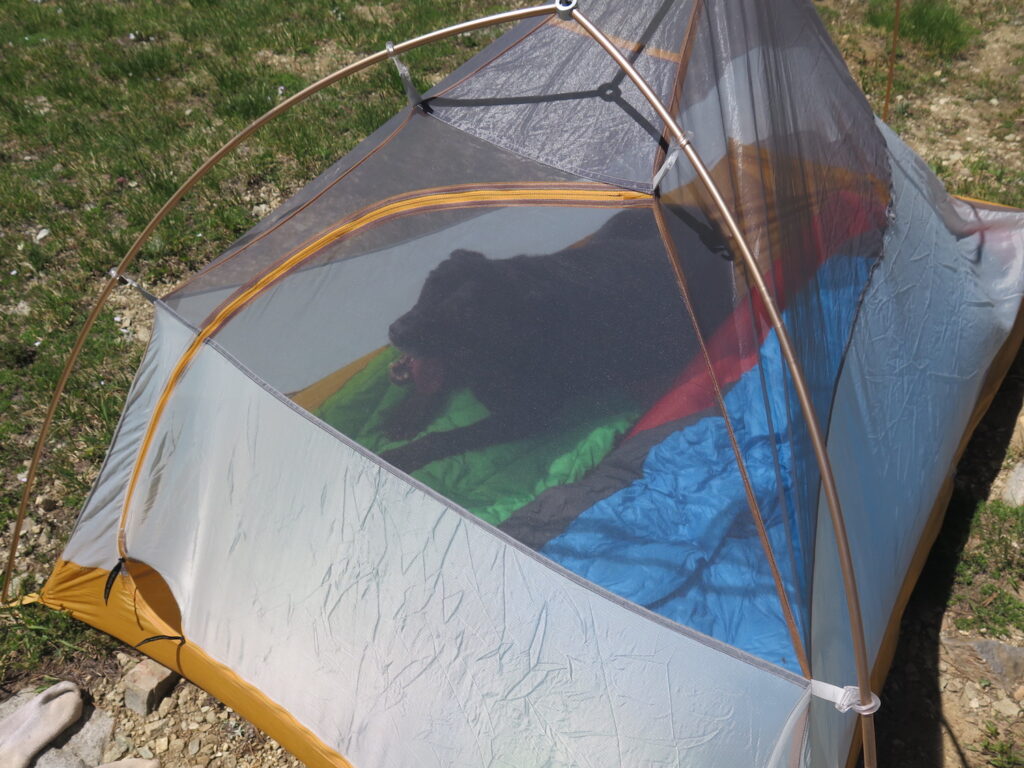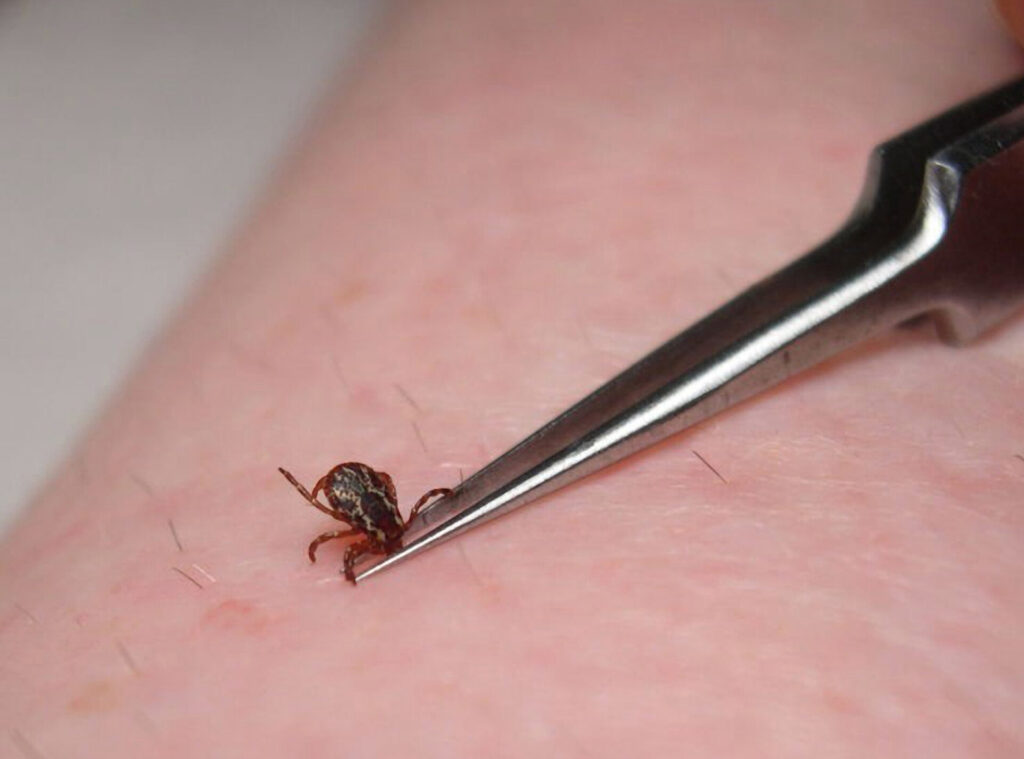Spring and summer adventures are the best! Ticks, mosquitoes, biting black flies and horseflies are not. Mosquitoes and flies can ruin a beautiful trip to an alpine lake almost instantly.
And ticks? I can deal with most things but when it comes to ticks it’s game over for me. YUCK. If there was an official project to nuke them all out of orbit I would donate immediately!

Even though Washington State has a relatively low prevalence of tick-borne disease compared to other areas of the country and we don’t have the type of mosquitoes that carry Zika, you should still protect yourself. Even black flies can carry a bacterial disease called tularemia, though most of the time their bites are more painful than harmful.
Here’s a little guide on biting things and how best to protect yourself.
Washington State Ticks
Different ticks live in different parts of the state and five types of ticks can transmit disease. In Western Washington, the black-legged tick can be found in areas of scrub oak like the Columbia River Gorge and in open areas along the edges of ponds and inside forests. This tick can transmit Borrelia burgdorferi, the bacteria that causes Lyme disease. Less than 20 cases are generally reported annually in Washington State and most were exposed outside the state.

Statewide, the dog tick and Rocky Mountain wood tick are more common in woodland areas, grasses and shrubs between wetlands and woods, or sunny open areas around woods. These ticks aren’t likely to cause Lyme disease but east of the cascades they can very rarely transmit Rocky Mountain spotted fever. Tick season for these guys starts in April and May, peaks in July, and then picks up again in September.
Ok, that’s more than enough about ticks! Blech!
Repellants
I have high sensitivity and allergies to almost everything so I’m careful about what I put on my skin and clothing. I also refuse to wear DEET. Hello, it dissolves plastic!
I’ve tried other natural herbal repellants but have yet to find any lemony lavender thing that actually repels something for longer than 60 seconds. Then I discovered Sawyer’s products, Permethrin and Picaridin. They’re not only natural but they actually work!
Both have been wondrous discoveries for me used together, they provide maximum protection against ticks as well as mosquitoes, chiggers, mites and even nasty biting flies.
Permethrin
Permethrin is a non-toxic, odorless natural insecticide derived from the chrysanthemum flower. Because it bonds poorly with the skin and will deactivate quickly, it is primarily used to treat clothing and gear. It won’t damage fabrics or cause discoloration and insects that come in contact with the substance are either repelled or killed.
Sawyer makes a trigger spray Permethrin repellant that can be easily applied to clothing and outdoor gear and lasts up to 6 weeks or 6 washings. Treatment of unwashable items like tents, hammocks, backpacks and camp furniture can last just over a month, even when exposed to sunshine and air.
Though Permethrin is non-toxic and it’s uncommon to have any kind of skin rash, irritation, or reaction to the substance, it’s still recommended to spray your clothing outside and let it dry.
Warning for cat owners: Permethrin is safe for use on dogs but is toxic around cats until it dries. If you’re a cat owner, take care to treat your gear and clothing away from your cat.
Check out Sawyer’s website for more information about application and usage for dogs.
Picaridin
I refuse to bath myself in DEET so Picaridin has been the Holy Grail for me! Picaridin is a synthetic repellant derived from the piperine of pepper plants and it lasts up to 40% longer than most DEET products. It comes in both a spray and lotion that won’t damage plastics or clothes and has a low odor citrus scent. Both provide up to 8 hours of protection from gnats and biting flies and 12-14 hours of protection against mosquitoes and ticks.
Picaridin is safe for use during pregnancy and family friendly. I carry it everywhere and can attest to its effectiveness!
Diatomaceous Earth
You’re probably thinking “Dia-what”?
If you have a dog, there’s a third weapon you can consider adding to your repellant arsenal.
Diatomaceous earth (DE) is a non-toxic substance made from the crushed fossils of freshwater organisms and marine life. It’s a white powder that under a microscope looks like small shards of glass. Weird, right?
It’s a fantastic natural pesticide for any insects with exoskeletons like ticks, fleas, mites, and even parasites like roundworms. It lacerates their shell, which ultimately dehydrates and kills them. Food-grade quality DE is perfectly safe for both people and animals and can be sprinkled in your dog’s fur to dissuade ticks and other hard-shelled pests from hitching a ride.
DE can also be used on bedding or at home to kill any ticks or fleas that may be present. Though it’s perfectly safe, keep the dust under control and away from you and your dog’s eyes, nose and ears as it can be an irritant, especially to the lungs.
You can find DE online or at some natural pet stores.
Mosquito and Fly Tips
Sometimes there’s no escaping these guys, but you can try the following:
- Camp away from bogs and standing water
- Avoid areas frequented by deer and other animals
- Seek the wind! I once successfully avoided mosquitoes in the Pasayten by simply camping in a windy, non-protected spot.
- Get higher! Mosquitoes and flies tend to fizzle at higher altitudes
- Bring a head net for areas where bugs and gnats are really bad

Tick Tips
When in tick country, in addition to repellants, the general protocol is to:
- Stay on the trail away from tall shrubs and grasses
- Wear light-colored, long-sleeved shirts and pants
- Tuck in pant legs or wear gaiters
- Check yourself and your pet frequently
I admit that I’m definitely not a long-sleeve or pants kind of person, so I’ve rarely followed this advice. I’m also frequently bushwhacking off the beaten path so I rely heavily on repellants and constantly check for ticks. I also wear bright yellow shoe gaiters during tick season that allow me to quickly see any ticks that may try to hitch a ride.

Post-Adventure de-Ticking
Remove and quarantine your clothes. If you’ve been out and about in tick country, bring a trash bag and do a complete clothing change once back at your car, preferably before you get in. That’ll keep any creepy crawlers confined until you can do a thorough check of your clothes. Don’t forget your backpack, shoes, hat, and other accessories.
Take a shower. Make sure to do a full body check and consider a shower or bath as quickly as possible. Ticks like to work their way up your body and find dark places to hide. Check your neck, waist, scalp, and hair.
Spin your clothes in the dryer. Once home, thoroughly inspect your clothing and give it a spin in your dryer on the hottest setting you have for 20 minutes or more. Ticks can survive the hot water of a washer but the dryness of a dryer will usually dehydrate them to a crisp.
Soak your gear in the bathtub. I’ve also heard of people throwing their gear into the bathtub. Ticks supposedly float to the surface and can be flushed. I admit I haven’t tried this, though a few friends swear by it. I personally prefer frying them in the dryer.
With all the years I’ve been out and about in Washington State, I’ve been lucky to have brought home only a handful of ticks. Each was on my clothing or on my body but not yet burrowed in. Still, ewwwwwwww!
The ones I brought home were picked up on the Lakeshore Trail in Stehekin, the Methow Valley, and the Yakima area of eastern Washington. The Twisp River area is notoriously thick with ticks.

My dog has unfortunately been victim to a few burrowing ticks, which was not fun! If you’re squeamish, you can always take your pet to the vet to have the tick removed, but do it as soon as possible.
And lastly, how to remove a tick.
I’m definitely feeling a little creepy-crawly now, but bear with me. We’re almost done!
If you do find a tick burrowed into you or your dog, don’t listen to some of the urban legends about matchsticks, petroleum jelly, nail polish, and the like. Many of these methods cause the tick to secrete more mouth juice (ewwwww) and increase your chances of infection or tick-born disease.
I remember a long time ago when I was younger, my dad lighting a match to try to get a tick out of my mom’s hair. It very nearly erupted in a fireball because of her hairspray. Don’t try that!!
The simplest and best way to remove a tick is to find a pair of fine-tipped tweezers and grasp the body as close to the skin as you can. Pull upward with steady, careful force. Jerking or twisting may break off their mouth parts.

Don’t handle a tick with bare hands and once removed, clean the affected area with alcohol, an iodine scrub, or soap and water. Dispose of the tick by sealing it in a container or ziploc bag, submersing it in alcohol, or flushing it down the toilet. You can also save it in the event you develop complications so it can be tested or you can send it to the State of Washington for tick logging. Directions are in the resources provided below. Personally I burn the little buggers with a match.
If you do develop any kind of rash or infection or can’t fully remove the tick, see a doctor immediately! Embedded mouth parts (ewwwwwww!) can cause infection or complications.
Ticks are gross, there’s no getting around it. Mosquitoes and black flies are a pain, quite literally, but there’s no reason to let them get in the way of you and the great outdoors. Go get yourself some Permethrin and Picaridin and enjoy your summer adventures!
More Resources.
- Washington State Dept of Health Tick Information Site
- Washington State Dept of Health Mosquito Information Site
- Washington State Dept of Health Biting Flies Information Site
- New CDC report on the effectiveness of Permethrin
- Fast Facts from the UW’s Center for Ecogenetics and Environment Health about Lyme Disease in Washington State
